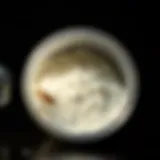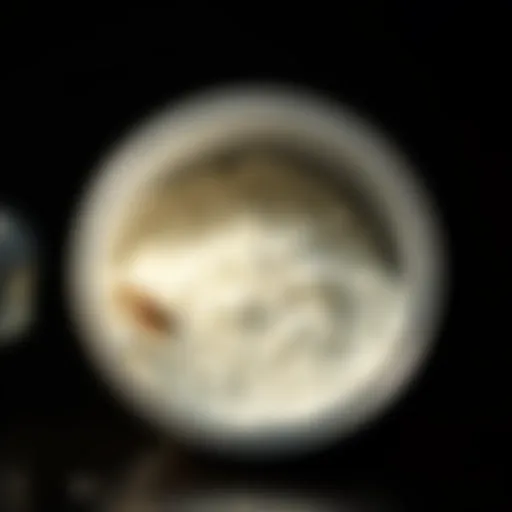Top Strategies for Removing German Cockroaches
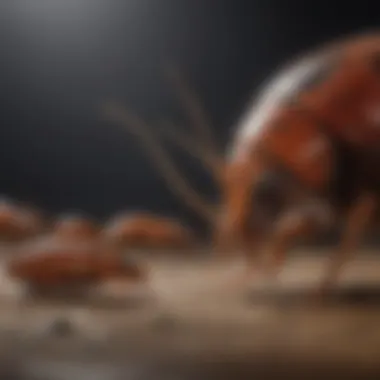

Intro
German cockroaches are more than just a nuisance; they're unwelcome guests that can turn your home into their haven. These pests are small and agile, making them stealthy and difficult to spot. With their ability to reproduce quickly, a minor inconvenience can escalate into a full-scale infestation before you even realize it. It’s not just about keeping your kitchen clean anymore; understanding how these pests operate is vital for any homeowner wanting to regain control.
In this article, we will unravel the best ways to address German cockroach infestations. We will discuss their biology, behaviors, and how you can protect your home effectively. Moreover, we’ll explore both traditional methods and eco-friendly solutions, giving you a range of options to suit your needs. So, let’s dive in and equip you with the knowledge to reclaim your living space from these pests.
Understanding German Cockroaches
Understanding German cockroaches is pivotal for anyone facing the challenge of an infestation. They are not just unwelcome guests but also pose potential health risks and can be quite stubborn when it comes to eradication. Grasping their biology and habits not only empowers individuals to address the nuisance effectively but also helps in preventing future occurrences. Armed with the right knowledge, homeowners can devise strategies tailored to their specific situations, saving time, effort, and resources.
Biology and Life Cycle
Physical Characteristics
German cockroaches possess a recognizable appearance, making them easier to identify compared to other pests. Their bodies are a shiny, light brown color with two dark parallel stripes running from head to back, looking like they're wearing a little armor. This physical characteristic not only makes them distinct but also enhances their ability to blend in with certain environments. Their flattened bodies allow them to squeeze into narrow cracks and crevices, which presents a challenge when trying to eliminate them. Recognizing these key features is crucial in understanding how to both locate and combat their presence effectively.
Reproduction Patterns
The reproduction patterns of German cockroaches are alarming. A single female can produce up to 400 offspring in her lifetime, with a single egg case (ootheca) containing as many as 40 eggs. This high reproduction rate significantly escalates the severity of an infestation if left unchecked. Notably, German cockroaches reach sexual maturity quickly, sometimes within a mere few weeks. This accelerated life cycle is detrimental for any attempt of control, as it allows populations to swell rapidly. Therefore, grasping these patterns becomes paramount to devising an effective strategy against them.
Life Span and Stages
German cockroaches undergo a series of stages from egg to adulthood. Their life span is typically around three to six months. Interestingly, they can survive without food for a considerable period, but water is essential for their survival. Understanding the nuances of these stages sheds light on when and how often to apply control measures. For example, targeting nymphs, the immature stages, can help disrupt the life cycle effectively. Addressing each stage appropriately can lead to a more successful eradication strategy.
Behavior and Habitat
Common Hiding Spots
German cockroaches have a knack for hiding in plain sight. Their favorite haunts include areas like kitchens, bathrooms, and places with warmth and moisture. Common spots are behind refrigerators, under sinks, and within the crevices of cabinets. Being aware of these hiding places can facilitate both prevention efforts and targeted control. Since they prefer darkness, a thorough examination of these areas is essential during inspection.
Feeding Habits
These cockroaches are omnivores and will munch on a variety of things. Their diet can include anything from food crumbs on the floor to toothpaste and soap. This adaptability in feeding contributes to their survival in various settings. Knowing their feeding habits helps in strategizing sanitation practices that can curb their access to food, thus minimizing their presence significantly. Keeping areas clean and practicing effective waste management can deter them from settling in.
Social Structure
German cockroaches exhibit a fascinating social structure. They tend to congregate closely, communicating and alerting each other to danger. This social behavior can make eradication efforts more complicated, as individuals may follow pheromone trails to food or hiding spots, reinforcing their presence. Recognizing their social dynamics allows for more strategic approaches in using traps and baits, targeting their communal habits to maximize impact.
Assessing Infestations
Assessing infestations is a crucial step in the journey to eliminate German cockroaches. Before diving into methods for eradication, it’s vital to understand the extent and signs of the problem. Recognizing the indications of an infestation allows for more effective intervention. A thorough assessment not only saves time but also reduces potential costs associated with ineffective treatments. Moreover, identifying the problem can provide insights into contributing factors, enabling homeowners to implement long-term solutions.
Signs of an Infestation
Identifying the signs of an infestation is the first step towards regaining control over your living space. Each indication carries weight and can help paint the full picture of your unwanted visitors.
Visible Cockroaches
Visible cockroaches are a glaring signal that something isn’t quite right in a household. Noticing these pests, especially during daytime, can indicate a serious infestation. Cockroaches are primarily nocturnal, so spotting them active in the light suggests high numbers. Their ability to scuttle quickly means they often evade sight, but seeing even one can be a warning sign.
It's important to understand that these roaches typically measure between 1.1 to 4 centimeters in length. The distinctive brownish-tan color and two dark stripes running along their back make them stand out. Observing their presence should motivate homeowners to kick their preventive efforts into high gear as the issue could very well be worse than it appears.
Excrement and Sheds
Cockroaches leave behind an array of droppings and shed skins. These remnants serve as another telling sign of an infestation. Droppings resemble fine grains of black pepper and can be found in cabinets, on countertops, or in dark, hidden areas. Not only do these droppings indicate the presence of roaches, but they also highlight their preferred pathways.
Shed exoskeletons present another unique marker. As cockroaches grow, they shed their skins several times. Finding these skins in abundance is a strong indicator of an established problem. Recognizing these signs allows for targeted cleanup and control efforts, helping you to identify hotspots within your space.
Unpleasant Odors
Unpleasant odors can be one of the most disturbing aspects of a cockroach infestation. These pests emit a musty, oily smell that can permeate throughout an area. The odor lingers, making it uncomfortable for anyone in the vicinity. Irregular smells are typically noticed in places where roaches congregate or live, such as kitchens or bathrooms.
The unique characteristic here is that the smell can become worse as the infestation grows. It can signal that there's something very wrong and should not be ignored. This aspect often prompts immediate action as it can affect the quality of life in the home, underscoring the urgency of addressing the underlying issue promptly.
Determining Severity
Once signs of infestation are noted, determining the severity helps shape the response. Not all infestations are created equal. Knowing how extensive the issue can guide decisions in pest control.
Infestation Size Assessment
Assessing the size of the infestation is central in deciding on an appropriate action plan. Smaller infestations may call for straightforward DIY solutions, while larger ones might require more robust interventions. An effective size assessment involves not just counting visible roaches, but also evaluating clues such as droppings and shed skins. This thorough inspection enables homeowners to gauge how long they may have been living with unwanted roommates.
The challenge is that nests can be hidden within walls or behind appliances, making visibility a little tricky. Knowing which areas are most affected can greatly enhance the accuracy of your assessment, pushing you closer to solid intervention choices.
Location Analysis
Location specifics form a vital part of the assessment. Cockroaches thrive in warm, dark, and damp environments. Therefore, identifying spots like under sinks, within cabinets, and behind appliances can reveal how the bugs have spread and where they prefer to congregate.
By analyzing these hotspots, one can formulate a strategic approach for the placement of traps or treatments. This focused methodology can increase the likelihood of effective pest removal, as it addresses the areas where these pests naturally thrive.
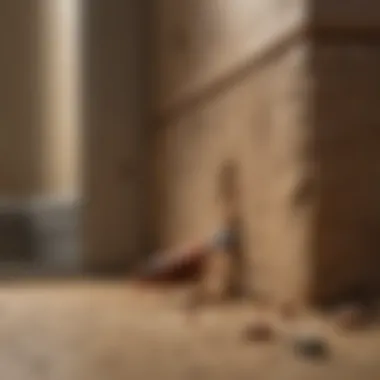

Health Implications
Lastly, understanding the health implications associated with a German cockroach infestation is critical. These creatures can transmit various illnesses through their feces and body parts. They can exacerbate allergies, as well as induce asthma in sensitive individuals, particularly children and the elderly.
By grasping the potential health risks, it becomes evident why swift intervention is essential. This awareness can not only motivate prompt action but also inform the type of control measures chosen—each of which should prioritize safety for all occupants in the space.
Prevention Techniques
Preventing a German cockroach infestation is the cornerstone of effective pest management. While it might seem unavoidable at times, staying one step ahead of these pests can save significant headaches later on. It's essential to appreciate that prevention minimizes the likelihood of an infestation developing in the first place, potentially saving both time and money while keeping your living space healthier. Three major avenues to explore in this regard are sanitation practices, physical barriers, and consistently monitoring for signs of these unwelcome guests.
Sanitation Practices
Sanitation practices form the bedrock of any effective prevention strategy. Keeping your environment clean not only helps eliminate food sources but also disrupts the habitats of German cockroaches. Here are the specific aspects worth considering:
Cleaning Regimens
A robust cleaning regimen entails more than just surface-level tidying. It includes methods that ensure every nook and cranny is addressed. Regularly sweeping, vacuuming, and mopping floors can remove crumbs and organic debris that attract these pests. One unique feature of cleaning regimens is their adaptability; whether you prefer a daily or weekly approach, establishing a routine pays dividends by removing potential food sources.
However, while a consistent regimen can create a less inviting environment for cockroaches, it does require discipline and commitment. Forgetting to perform these cleaning tasks just once can provide these pests an opportunity to thrive.
Food Storage Solutions
Storing food properly is another essential aspect of preventing cockroach infestations. Utilizing airtight containers for grains and perishables keeps out not just roaches but also other pests. Clear labeling and organization in cupboards can also prevent spills that attract these creatures.
The distinctive feature of food storage solutions is that they can be elegant as well as practical. Not only do they deter pests, but they also keep your pantry looking organized and appealing. However, one disadvantage is the initial investment in good storage containers, which may require a bit of upfront cost.
Eliminating Clutter
Finally, eliminating clutter is a pivotal part of prevention. Cluttered spaces provide ideal hiding spots for cockroaches, allowing them to breed and multiply undetected. This facet involves regularly decluttering areas such as pantries, basements, and any other places where items accumulate.
The key characteristic of this approach is that it not only deters cockroaches but often creates a more enjoyable living space overall. A clutter-free environment can lead to better feelings of peace and order at home. However, one's attachment to items can pose a challenge, as it might require a bit of emotional work to part with belongings.
Physical Barriers
In addition to maintaining cleanliness and organizing your space, physical barriers play a substantial role in cockroach prevention. These barriers can thwart the entry of cockroaches from outside and prevent them from traveling between spaces within your home.
Sealing Cracks and Gaps
Sealing cracks and gaps around windows, doors, and walls can dramatically reduce the likelihood of cockroaches entering your home. Using caulk to fill in holes and gaps creates a solid line of defense against these pests. The unique feature here is that this method is not only easy to implement but can also be done with basic tools.
While sealing these openings presents a low-cost deterrent, a disadvantage is the need for diligence in monitoring these seals to keep up with wear and tear.
Using Screens and Mesh
Employing screens or mesh on windows and vents is another effective tactic. This physical barrier allows for ventilation while keeping unwanted pests out. The benefit of using screens is that they maintain airflow without surrendering your home to infestations. However, screens can sometimes require maintenance and repairs due to wear from the elements.
Installing Door Sweeps
Lastly, installing door sweeps acts as a secondary barrier against cockroaches. These are strips that hang at the bottom of doors to eliminate gaps that roaches might easily crawl through. Their main appeal lies in effectiveness and simplicity; they do not require extensive home modifications. But if not installed correctly, their effectiveness can be compromised, and they may need replacement in time due to wear.
Control Methods
In the quest to banish German cockroaches, understanding how to control their populations is crucial. The various control methods available—both chemical and non-chemical—allow homeowners to tailor their approach based on specific needs, preferences, and the severity of the infestation. Using the right strategies can make a substantial difference in achieving long-term eradication while ensuring that the environment and health aren't compromised.
Chemical Solutions
Chemical interventions, while often met with apprehension, can be effective in swiftly dealing with severe infestations. It's essential to understand the different types of pesticides available, how to apply them correctly, and the safety precautions necessary to protect living spaces and the occupants within.
Types of Pesticides
Chemical pesticides come in various formulations, from sprays to baits. Specifically, insecticide residual sprays and gel baits are popular choices among homeowners. Residual sprays offer a lasting effect that can continue killing roaches long after application, making them a practical option for prolonged infestations. Meanwhile, gel baits attract pests, allowing for targeted elimination when they consume the bait, leading to a chain reaction as they share it with their colony.
However, one must consider the toxicity levels of the pesticides used; it’s a double-edged sword. While effective, exposure can pose risks to humans and pets if not used properly. Therefore, understanding which to choose based on efficacy and safety is paramount to any successful control program.
Application Techniques
Application techniques can significantly impact how well a pesticide works. When using residual sprays, for instance, ensuring an even distribution in cockroach hiding spots, such as behind appliances or under sinks, allows for better results. On the other hand, spot treating with baits requires placing them in areas where roaches frequent—such as cupboards or corners—to ensure maximum exposure.
A key feature of application techniques is the methodical approach: ensuring that one follows instructions for the pesticide chosen can reduce waste and enhance effectiveness. But improper application can lead to bait rejection by cockroaches or ineffective residuals, requiring one to start over.
Safety Considerations
Safety considerations are non-negotiable when dealing with chemical control methods. It’s critical to read and follow the product labels meticulously, including guidance for ventilation, protective measures, and disposal. The central aspect here is minimizing unnecessary exposure to harmful substances. Children and pets often come into contact with these areas, making it vital to apply techniques that prevent contact until the product has dried or settled.
Appropriate safety precautions not only protect the household but also contribute to broader community health standards. There’s no harm in being cautious—it's better to be safe than sorry, especially in households with vulnerable members.
Non-Chemical Alternatives
For those looking to sidestep chemicals, non-chemical alternatives can also work remarkably well. These methods often align with environmental consciousness and provide a different approach to dealing with cockroaches without introducing potential toxins into the home.
Boric Acid and Diatomaceous Earth
Boric acid and diatomaceous earth effectively interrupt the life cycle of cockroaches. Boric acid works by dehydrating and damaging the cockroach’s exoskeleton, which can lead them to a slow death after ingestion. Diatomaceous earth, made from crushed fossils of tiny, aquatic organisms, serves a similar purpose by its abrasive nature, breaking down their protective layer.
What makes them stand out is their long-lasting effect. Once applied in areas where roaches travel, these substances can continue to work over time. However, they require patience; this approach does not yield immediate results, which may not sit well with everyone. Yet, the eco-friendliness of these options often appeals to those wary of chemical solutions.
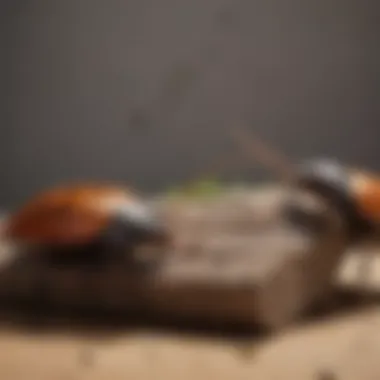

Traps and Baits
Traps and baits offer a proactive way to reduce cockroach populations. Sticky traps can capture roaches and inform homeowners about the severity of the infestation. Meanwhile, bait stations can attract and feed cockroaches, eventually leading to a population decrease.
The convenience of traps and baits lies in their low maintenance and ease of use. Just place them where you suspect cockroach activity, and let them do their job.
However, effectiveness can be nuanced; if they’re placed in the wrong locations, they may not achieve desired outcomes, and getting rid of an entire infestation may take longer than anticipated.
Natural Repellents
Natural repellents like peppermint oil or tea tree oil are becoming popular as alternatives to harsher chemicals. The strong scents of these oils can deter German cockroaches from settling, promoting a more pleasant environmet.
What makes natural repellents attractive is the simplicity of their use and accessibility. However, it’s important to temper expectations; while they can reduce the likelihood of a roach becoming a permanent resident, they might not fully eliminate an existing infestation. Thus, using them as part of a larger strategy can yield better results.
Professional Pest Control Services
When dealing with German cockroach infestations, the role of professional pest control services becomes quite essential. These experts bring a depth of knowledge and experience that can turn the tide against those pesky invaders. Strategies and tactics used by professionals typically surpass what the average homeowner can achieve. With health risks associated with these pests, relying on trained professionals may sometimes be the best course of action.
When to Call Experts
Understanding Complexity
German cockroaches are not just another nuisance pest; they can be quite tricky to deal with. Their biology and social structure define the complexity of infestations. A fundamental aspect of understanding complexity involves discerning the various factors that contribute to a successful eradication. Cockroaches can breed rapidly and hide effectively, which means simple methods may only scratch the surface.
Thus, this characteristic makes consulting professionals a wise choice. They not only assess the infestation but can also tailor strategies based on an in-depth understanding of the issue. Their unique risk assessment for complexity helps in formulating multi-faceted approaches that can address all lifecycle stages of the cockroach. However, this can come with a higher price tag, and you may not be prepared to invest in extensive interventions unless necessary.
Extent of Infestation
The extent of infestation is another crucial factor that can determine the way forward. If you spot one or two cockroaches, it might not seem that serious. Yet, these are usually just the tip of the iceberg. The key characteristic of this aspect lies in recognizing that cockroaches reproduce quickly. This means their numbers can swell overnight, catching homeowners off guard.
Professional services offer a thorough inspection of your space. They can identify hidden breeding grounds, thus helping to implement effective strategies at the right moment. Though this proactive approach has its advantages, it can feel overwhelming as it may require ongoing visits and interventions if the problem is significant.
Health and Safety
The health and safety angle has become increasingly critical in today’s world. German cockroaches are vectors for numerous diseases, from salmonella to various allergens. This makes their eradication not merely an inconvenience but a health issue. The unique feature of calling in professionals for this reason is that they are equipped with knowledge about safe practices and methods. This ensures that interventions are effective without compromising your home's safety.
On the other hand, this often adds a layer of reassurance with trained technicians handling potentially hazardous materials. There is always a need for discussing safety protocols and ensuring that any chemicals used are compatible with your household's situation.
Choosing a Pest Control Company
When you decide that professional help is necessary, finding the right pest control company becomes the next step. There's quite a lot to consider in this process. Choosing wisely can make all the difference.
Credentials and Experience
The credentials and experience of a pest control company play a massive role in ensuring effectiveness. Not all companies have the same level of expertise or techniques, so this is a crucial factor. A company with a solid reputation, backed by appropriate certifications and licenses, signals reliability. The beneficial aspect here is that experienced professionals generally know the pests they deal with more intimately. They also tend to stay updated on the latest techniques, which can be quite an advantage.
However, choosing strictly based on experience without considering customer feedback could lead to grave missteps. This could ultimately affect the quality of service you receive.
Methods Used
The methods used by a pest control company should align with your personal preferences and the degree of infestation present. Professionals often have access to specialized products and techniques. This can include eco-friendly approaches as well as traditional methods. In this article, it’s beneficial to discuss whether the tackled company uses Integrated Pest Management (IPM) methods that focus on not just eliminating the pests but keeping them from coming back.
Of course, different companies have varying practices. You might find that some focus strictly on chemical treatments, while others prioritize non-chemical solutions. This variation can sometimes make choosing the right service an arduous task but understanding the methodologies can help you make an informed decision.
Customer Reviews
Finally, consumer feedback and customer reviews play a vital role in the choice of pest control company. The experiences of previous clients can provide insights into what working with a company might be like. Positive testimonials can affirm a company’s reputation, while negative reviews can give red flags. The key characteristic of relying on customer reviews is that they reveal not just the effectiveness but also the fiscal aspect of hiring these services.
However, be cautious; isolated examples may not represent the whole picture. Look for comprehensive feedback patterns rather than focusing on one-off experiences. Overall, this step can guide your selection process and help ensure that you are making a well-rounded choice.
Post-Control Measures
After implementing various strategies to rid your home of German cockroaches, the journey doesn't quite end there. The post-control measures are crucial, serving as the final touch in ensuring that your living space remains cockroach-free. Without these steps, it’s like building a dam but forgetting to patch up the leaks; the pests can return before you can say "not again!"
Monitoring for Recurrence
Monitoring for recurrence involves a systematic approach to ensure no new cockroaches have taken up residence. It’s about being vigilant, keeping an eye out, and acting swiftly if you spot any signs of trouble.
Regular Inspections
Regular inspections are like routine check-ups for your home. This practice involves physically examining different areas for signs of cockroaches, which can significantly contribute to maintaining control. The key characteristic of regular inspections is their proactive nature. They allow you to catch potential infestations early, preventing those pesky critters from multiplying.
A unique feature of regular inspections is their focus on both common areas and hidden spots where cockroaches might hide. This method’s advantage is that it ensures a thorough understanding of where you might need to tighten controls. On the downside, if inspections are neglected or not taken seriously, you might miss the first signs of a new infestation, so staying consistent is key.
Utilizing Monitoring Devices
Utilizing monitoring devices brings a tech-savvy twist to traditional pest control. These devices can be traps equipped with sensors, which alert you upon capturing a cockroach or even a camera setup. They enhance awareness and make it easier to pinpoint problem areas.
The key characteristic of these devices is their ability to provide real-time data. This can be a beneficial choice, offering peace of mind while you go about your day-to-day activities. An effective monitoring system can early warn you of a cockroach presence even before you spot one.
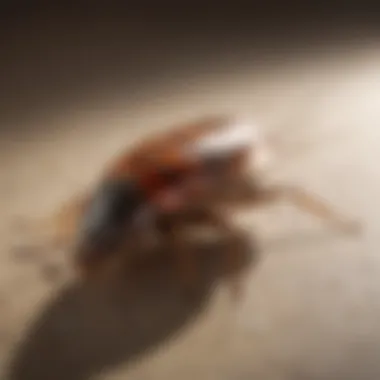

However, a disadvantage is the cost associated with sophisticated devices. For instance, not everyone is inclined to invest in smart traps, but for those who take pest control seriously, these devices can be incredibly fruitful.
Effective Reporting
Effective reporting is often overlooked but plays a huge role in maintaining your pest control efforts. This includes keeping a log of sightings or any changes in the environment that may promote cockroaches.
The key characteristic of effective reporting is its systematic approach to tracking problems. This practice helps identify patterns or repeat occurrences. It can also foster a dialogue among household members about pest control measures taken, enhancing overall awareness.
This feature becomes particularly advantageous when sharing information with pest control professionals who may assist in a follow-up. Just bear in mind that reporting can sometimes lead to unnecessary panic if done overly, especially if not based on factual signs.
Continued Preventive Strategies
Continued preventive strategies are necessary to ensure that cockroaches stay away for good. This involves creating an environment that is less hospitable to them and fostering habits that everyone in the household can follow.
Maintenance of Clean Environment
Maintenance of a clean environment is the foundation of effective pest control. Regular cleaning reduces food sources and hiding spots for cockroaches, ultimately aiding in their elimination. A clean kitchen, for instance, can greatly deter them.
The key characteristic of maintaining a clean environment is its simplicity. Anyone can easily adopt a more stringent cleaning routine as a lifestyle change. A unique feature is the fact that it not only benefits pest control but contributes to overall hygiene and well-being in the home.
However, an ongoing chore can be overwhelming, especially for busy households. But sticking to a cleaning schedule can help keep this task more manageable.
Educating Household Members
Educating household members about the importance of pest control measures is pivotal. This collective understanding encourages everyone to contribute towards a roach-free environment. From controlling behaviors to cleaning habits, everyone's role can significantly affect the outcome.
The key characteristic of this strategy lies in community engagement. When everyone on the home front is aware, it minimizes the chances of unintentional cockroach-friendly practices.
One unique advantage is building a team spirit among family members. On the flip side, if some are resistant to change, it may create discord. Nevertheless, clear communication and leadership can steer everyone in the right direction.
Adjusting Control Techniques
Adjusting control techniques involves analyzing the effectiveness of your strategies and modifying them as needed. It’s about being flexible and adaptive based on what you observe in your post-control monitoring.
The key characteristic of adjusting control techniques is their dynamic nature. What works today may not necessarily work tomorrow, especially with evolving pest behavior. This makes it a beneficial choice as it allows for continued effectiveness over time.
A unique feature of this practice is the learning curve involved. Observing how cockroaches respond to different tactics allows for better-informed methods in the future. However, a potential downside is the trial-and-error aspect, which can be time-consuming and frustrating when immediate action is needed.
Environmental Considerations
When dealing with German cockroaches, it's vital to look beyond just the immediate solutions for eradication. The choices we make in pest control can significantly impact our environment. Understanding the environmental considerations surrounding pest control methods allows homeowners not only to manage infestations wisely but also to protect both their home environments and the greater ecosystem.
Adopting eco-friendly pest management strategies is increasingly important. Alongside the immediate benefits of eliminating cockroaches, these methods advocate for a sustainable approach, minimizing harm to non-target organisms and reducing chemical usage. This helps in addressing broader issues such as environmental health and biodiversity protection, which are critical in today’s world.
Eco-Friendly Control Options
Benefits of Natural Treatments
Natural treatments are gaining traction among homeowners as an effective way to combat German cockroaches. A key advantage of these solutions is their low toxicity compared to conventional chemicals. Many of these treatments are derived from plants or minerals, making them safer for household members and pets.
For example, essential oils like peppermint or tea tree oil can repel cockroaches effectively. These treatments also come with an ecological benefit — their degradation does not leave harmful residues that can affect soil and groundwater. Thus, they align well with an eco-conscious lifestyle but may not provide immediate results as strong as chemical options.
Limitations
However, it’s essential to recognize the limitations associated with natural treatments. Many of these solutions require persistent application and can sometimes be less effective in severe infestations. What's more, some homeowners may find it tedious to mix, apply, and reapply these treatments regularly.
Additionally, while they may deter cockroaches, natural methods might not eliminate the problem altogether — leading to a false sense of security. Hence, it’s important to inform yourself and set realistic expectations regarding effectiveness when choosing this route.
Implementation Strategies
When implementing eco-friendly options, it’s key to integrate them into your existing pest control routine. Start by assessing areas of high roach activity and combine natural repellents with good sanitation practices to enhance effectiveness.
Utilizing devices such as traps made from non-toxic materials can also help monitor the presence of roaches, giving you a clearer picture of the infestation over time. Planning out a schedule for regular applications of these treatments can synergize your efforts, making maintenance smoother and more effective. While these strategies may require more labor initially, in the long run, they establish a healthier home environment for you and your family.
Impact of Pesticides on Ecosystems
Understanding Human and Environmental Safety
In contrast to natural treatments, the use of pesticides carries a weighty responsibility. Understanding human and environmental safety is critical when applying such chemicals. Often, pesticides are punitive measures that can immediately reduce cockroach populations, but their long-term implications on health and ecosystems are a deeper concern.
Product labels and guidelines provide information on application techniques and safety measures. Homeowners should adhere strictly to these instructions to minimize risks — using protective gear during application can prevent direct exposure. Moreover, ensuring that treated areas are well-ventilated is crucial; this reduces any potential health risks for inhabitants.
Preventing Non-Target Effects
While pesticides effectively target pests, they can also inadvertently affect beneficial species in the vicinity. Non-target effects can lead to a decline in beneficial insects, birds, and other wildlife that play vital roles in maintaining ecological balance.
By understanding the specific insect life cycles and behaviors, homeowners can use pesticides more judiciously, applying them when beneficial species are less active. This strategy helps to mitigate ecological disturbances while still addressing the infestation at hand.
Integrating Biology into Pest Management
Integrating biological practices in pest management yields a holistic approach that prepares homeowners to deal with cockroach infestations sustainably. This can range from introducing natural predators to utilizing biological control agents that target specific pests without harming non-target organisms.
Understanding cockroach biology can inform strategies that make the environment less conducive to their survival. Furthermore, by collaborating with nature — encouraging the presence of natural predators or utilizing bio-pesticides — you can build a resilient ecosystem that combats pests naturally, reducing your reliance on harsher chemicals.
Through thoughtful management and attention to ecological impacts, you can tackle German cockroach infestations effectively, without compromising your family's health or the health of the environment.


